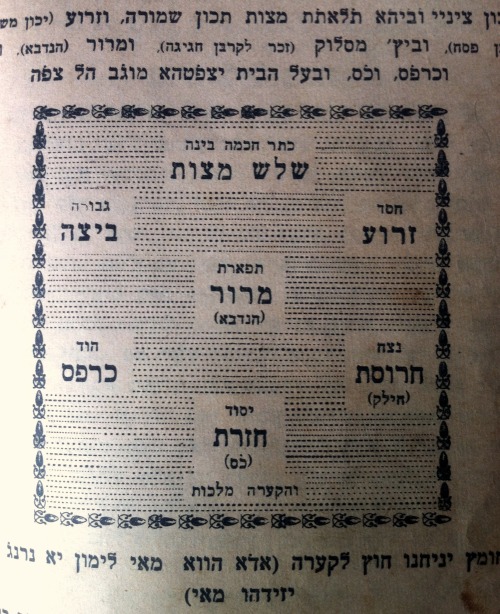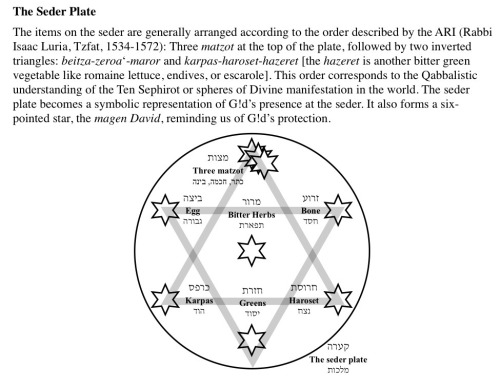jewishhenna: Arranging the Seder Plate in Judeo-Arabic Tradition I have a (modest but growing) colle
jewishhenna: Arranging the Seder Plate in Judeo-Arabic Tradition I have a (modest but growing) collection of vintage haggadot with Judeo-Arabic translation, and they contain a lot of fascinating information not just about different dialects and vocabularies of Judeo-Arabic (which is why I originally started) but also about Passover traditions in general. One common image or diagram at the front is the arrangement of the seder plate, called in some traditions as-sistu or at-tabaq or as-siniya in others. Many North African communities used a reed basket rather than the metal or porcelain tray common in other traditions. The items on the seder plate, as you see, are arranged in a Qabbalistic formation which corresponds to the ten sephirot: The three matzot for keter, hokhma, and bina. The egg (al-bayda) for gevurah and the shankbone (ad-dra’) for hesed. The maror (translated in one haggada as hinduba, “chicory”) for tiferet. The karpas for hod and the haroset (known as hileq or haliq in Iraqi tradition) for netzah. The hazeret for yesod. The seder plate itself representing the lowest sephira, Malkhut. The haggadot here are:1. Algerian (printed in Livorno), 1856.2. Tunisian (printed in Tunis), 1930s or 40s.3. Algerian (printed in Vienna), 1890.4. Moroccan (printed in Casablanca), 1930s or 40s5. Iraqi (printed in Jerusalem), 1940s.6. My own summary and diagram, from this booklet, 2012. -- source link
Tumblr Blog : darkhei-noam.tumblr.com
#passover#jewish#judism





